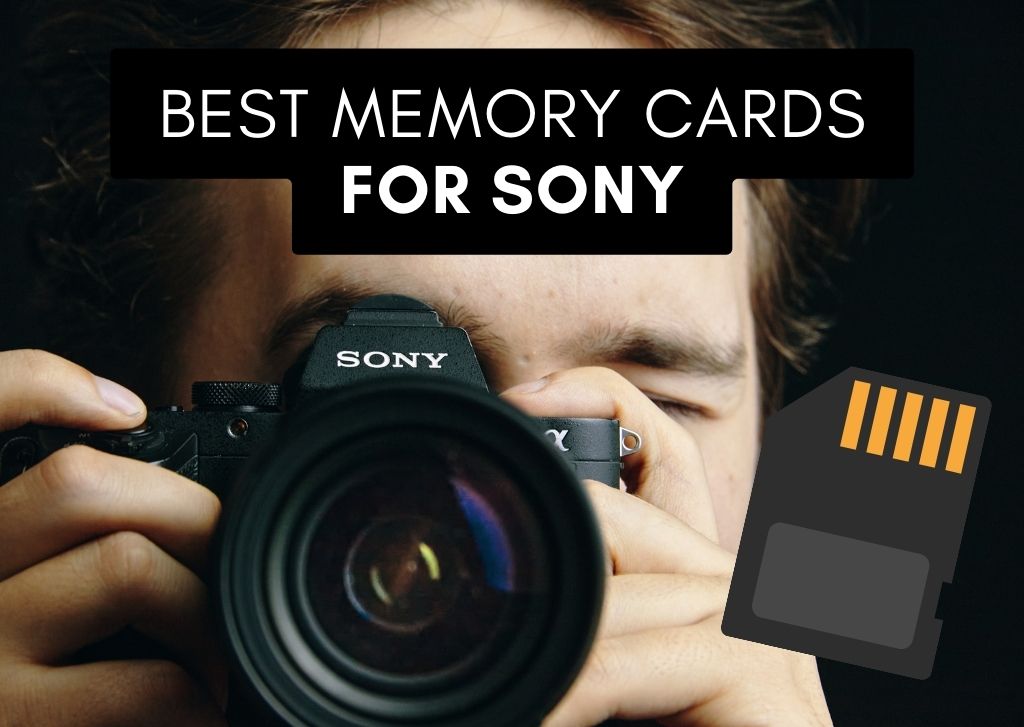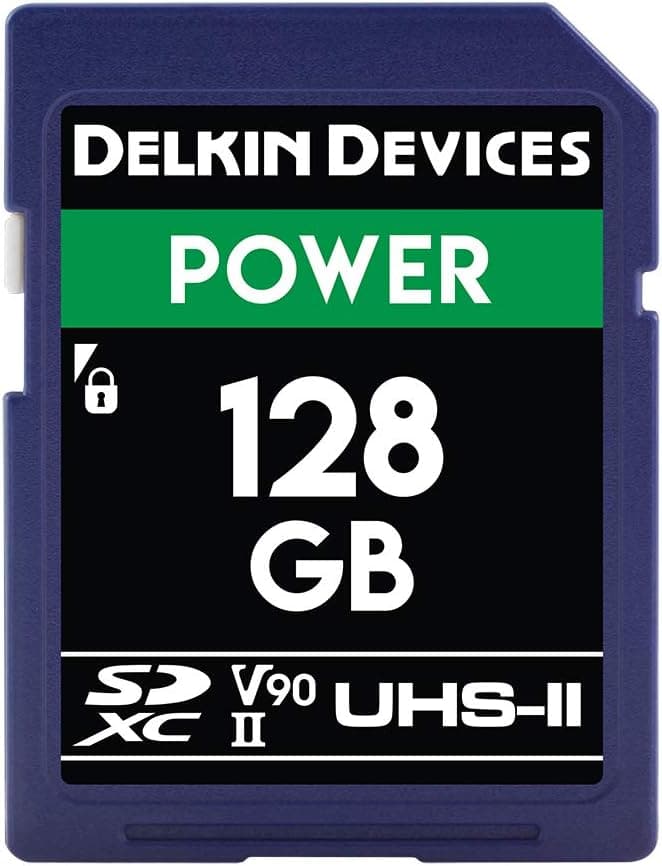The start of any successful day of shooting starts with a fast and reliable memory card. So let’s take a look at the best SD cards for Sony so you can make sure you never have to deal with corrupt files or excessive buffering.
As a photographer, I have used my share of SD cards over the years. Some were great, while others corrupted at the most inopportune moments. To save you the trouble, I’ve compiled a list of what I’ve found to be the best UHS-II and UHS-I SD cards out there, from my personal experience and those of my trusted peers.
| Image | Product | Features | Price |
|---|---|---|---|
Best Overall 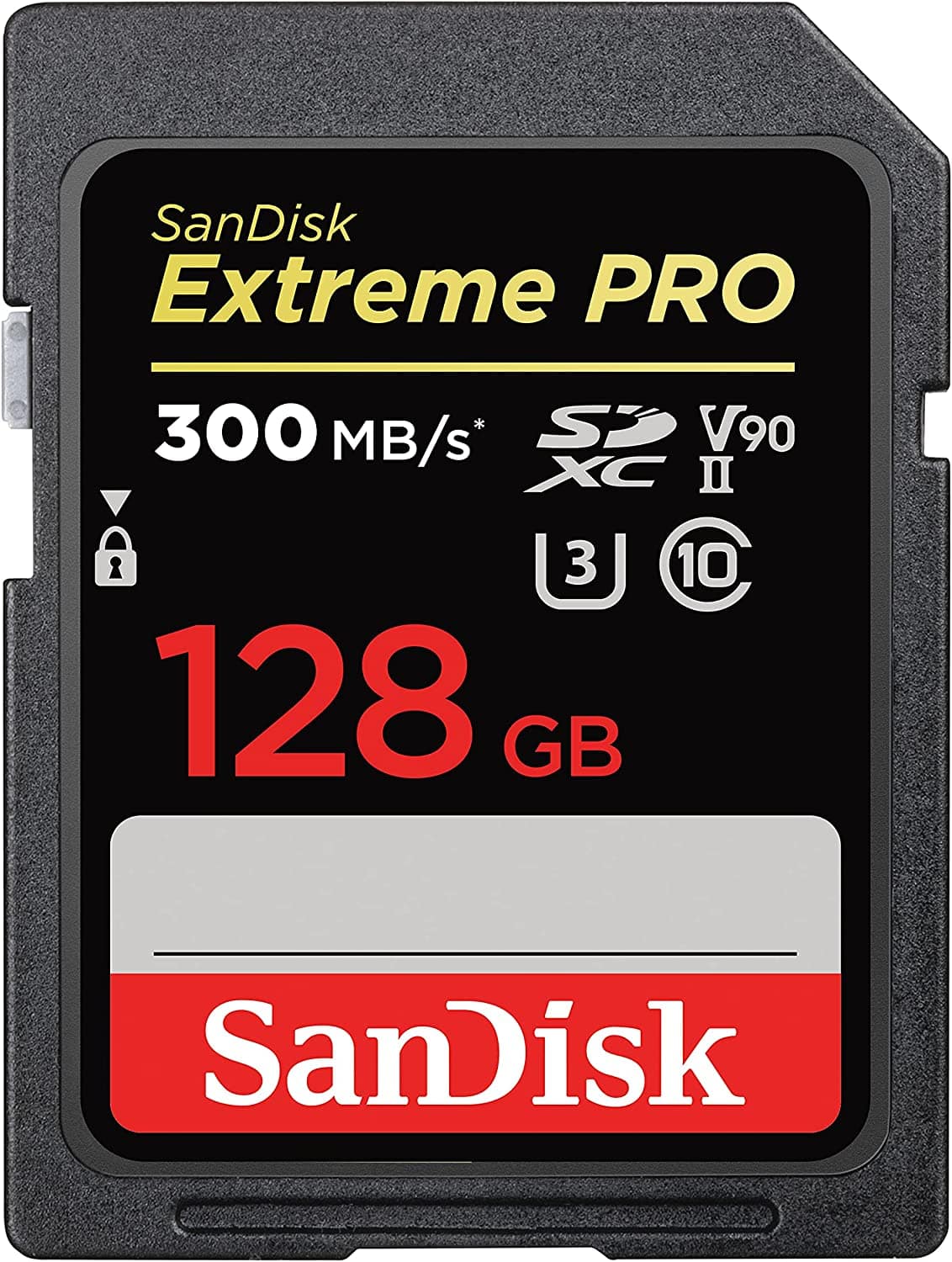 |
| Find On Amazon | |
Fastest & Most Durable 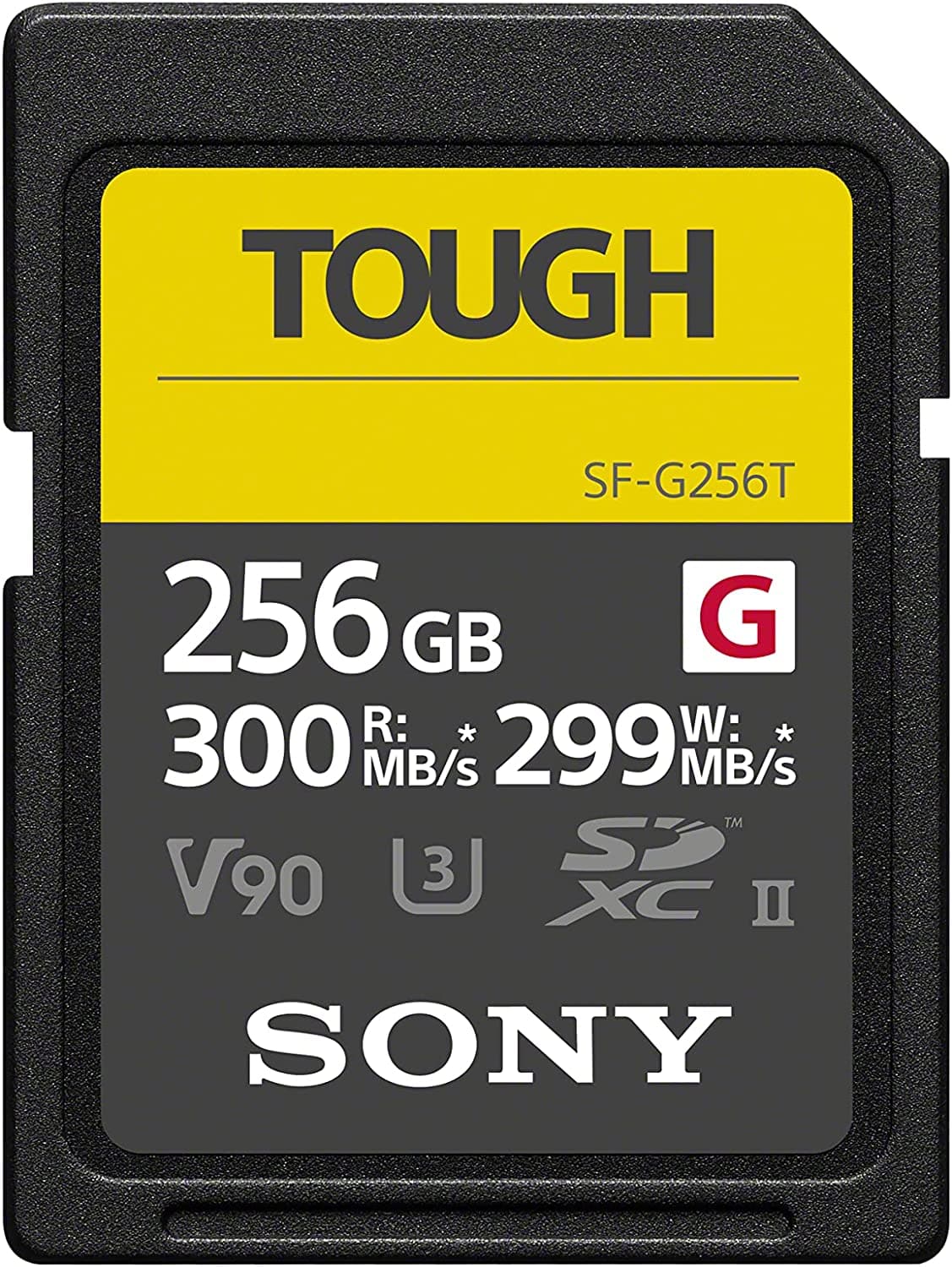 |
| Find On Amazon | |
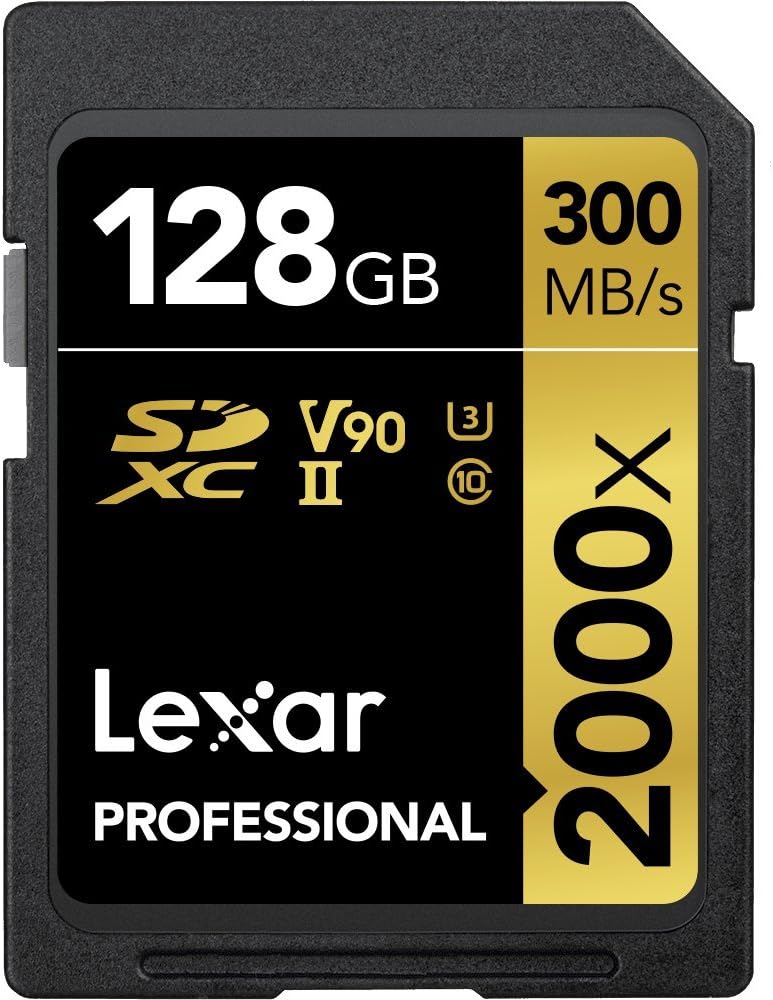 |
| Find On Amazon | |
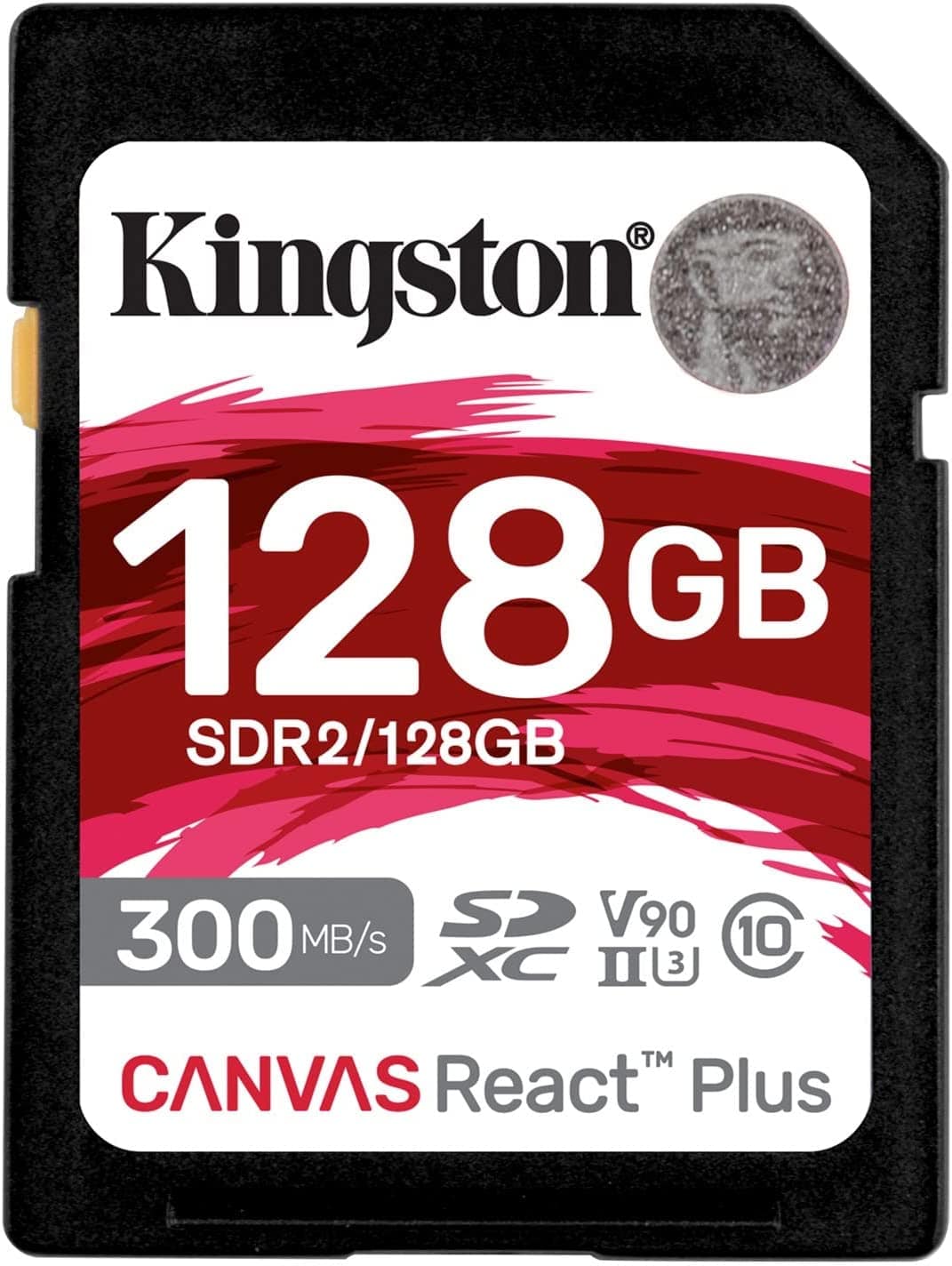 |
| Find On Amazon | |
 |
| Find On Amazon | |
Best UHS-I Card 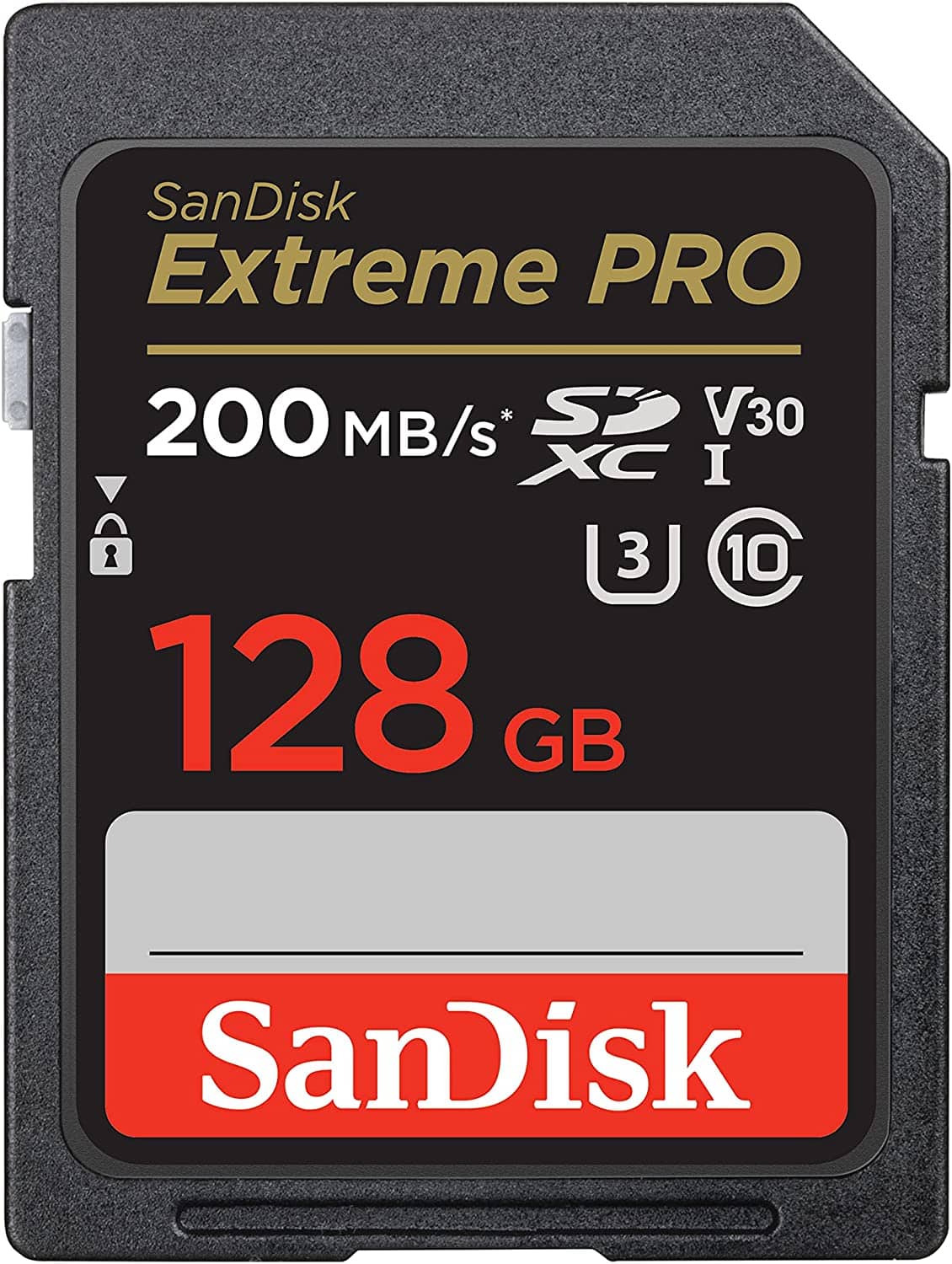 |
| Find On Amazon | |
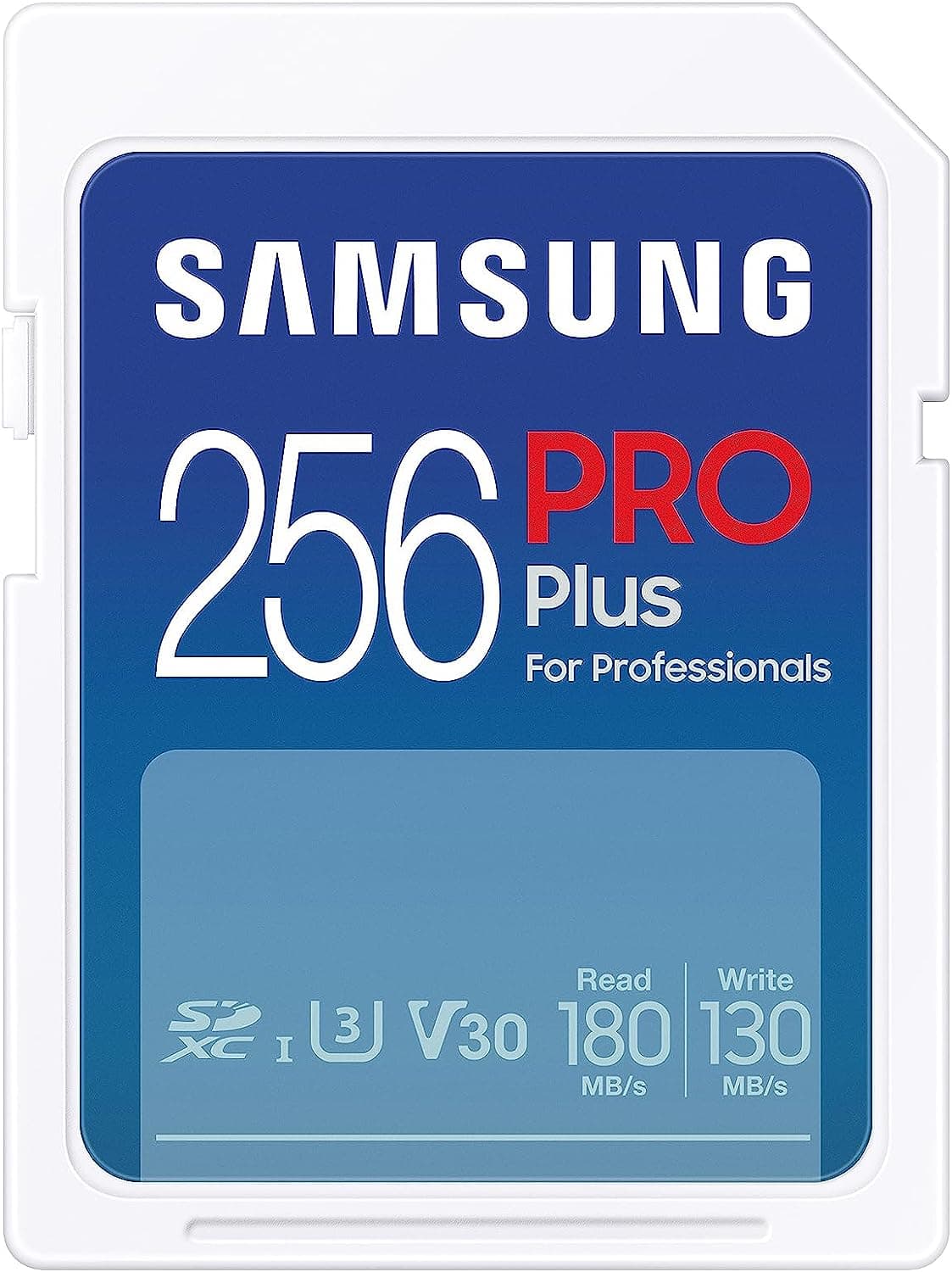 |
| Find On Amazon | |
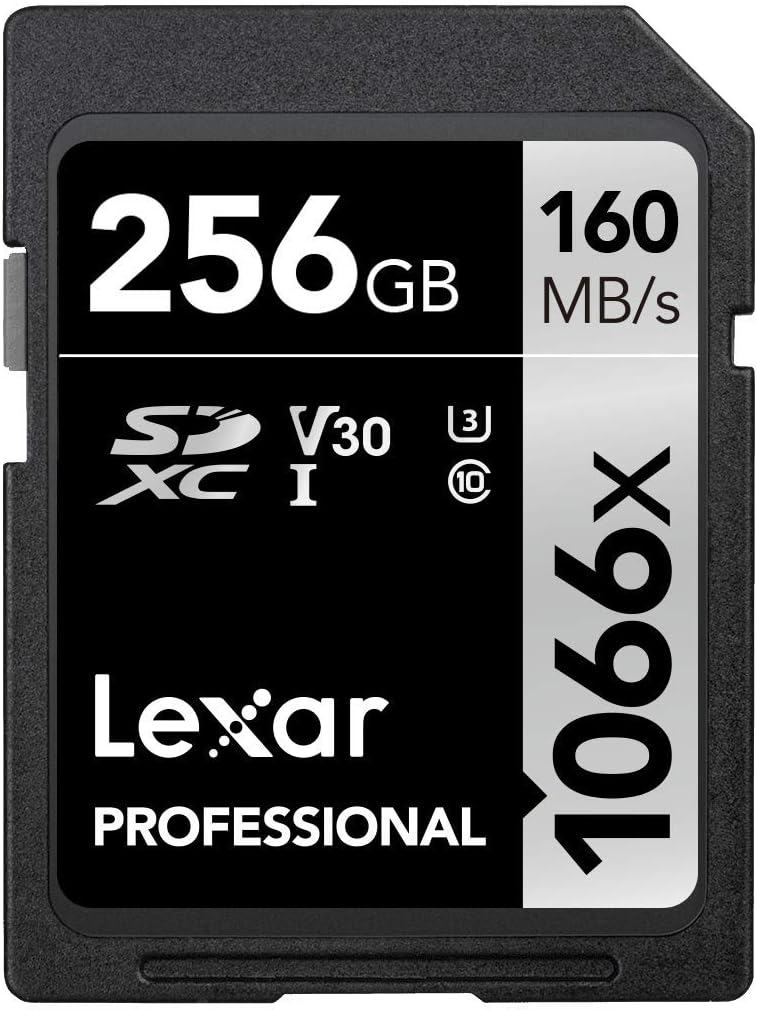 |
| Find On Amazon | |
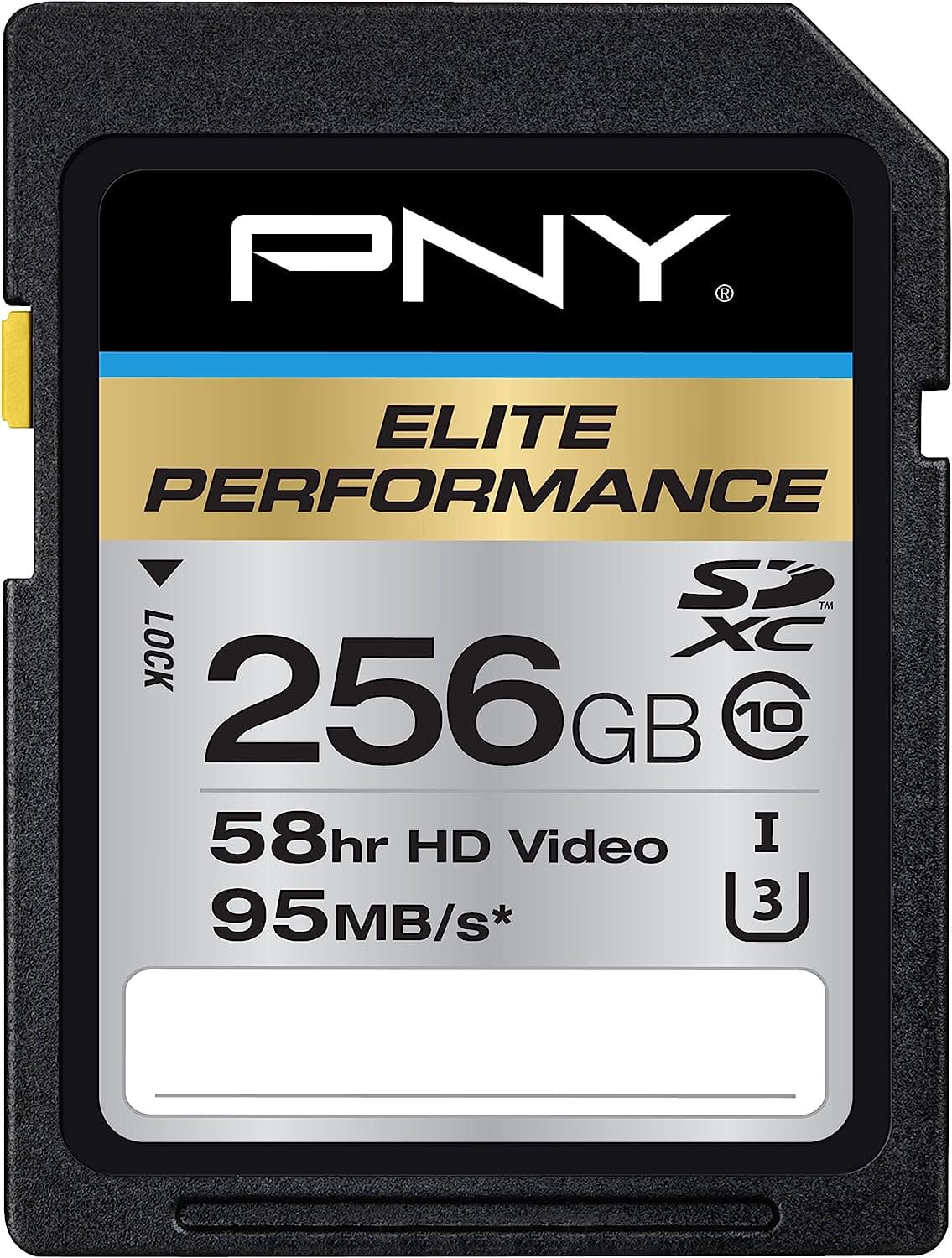 |
| Find On Amazon |
The Best UHS-II SD Cards For Sony
UHS-II cards are those with write and read speeds that reach up to 312MB/s. These are frequently used by video shooters and those who set their cameras to high-speed burst mode.
1. SanDisk Extreme PRO UHS-II SD Card
- Capacity options: 32GB, 64GB, 128GB, 256GB
- Speed class: U3, V90
- Write speed: up to 260MB/s
- Read speed: up to 300MB/s
SanDisk is a recognizable memory card brand for most photographers and videographers. Often included in camera bundles, SanDisk has served the imaging community since its inception in 1981. The SanDisk Extreme PRO UHS-II is the company’s more popular SD card option, packed with features at a bang-for-your-buck price.
With a fast write speed of 260MB/s, there won’t be any buffering or lag issues for creators who shoot large bursts of images or longer 4K video clips. Although this speed would be overkill for the casual user (in which case, a UHS-I version is available), it’s fantastic for the enthusiastic photographer.
Being backward compatible with devices that can only handle UHS-I speeds allows this UHS-II card to be used on an array of cameras. This is a big bonus for professionals who have several types of cameras at their disposal.
SanDisk is well known for its reliability and durability. The construction is intended to be shock-proof, able to be dropped from up to 16.4 feet with no issue. In addition, the card is waterproof, temperature-proof, and x-ray-proof (great for traveling photographers).
The above being said, this memory card is more expensive than some comparable UHS-II cards. However, with SanDisk’s longstanding reputation at its back, it is well worth the price for peace of mind.
Reasons To Buy:
- High-speed and reliable performance for both photos and 4K video
- Backward compatible with UHS-I devices
- Durable and shockproof design
- One of the best-value speed cards you can buy
Reasons To Avoid:
- More expensive than some other UHS-II cards
- Overkill for UHS-I card interfaces
2. Sony SF-G Tough UHS-II SD Card
- Capacity options: 32GB, 64GB, 128GB
- Speed class: U3, V90
- Write speed: up to 299MB/s
- Read speed: up to 300MB/s
An electronics company through and through, Sony is one of the most recognizable brands in the world. From televisions and video games to making a significant mark in the camera world, high-quality memory cards from Sony are not a surprise.
Considering you’re looking for a card for your Sony camera, this card will meet your expectations! The Sony SF-G Tough UHS-II SD Card is likely the most compatible option from this list because the camera company designs it.
This SD card features a lot of useful perks, such as being backward UHS-I compatible and resistant to dust, shock, x-rays, water, and even bending. This card is part of Sony’s “Tough” line because it is built to withstand harsh elements.
All of this does come at a significant price tag. The price tag adds up since most photographers and videographers need more than one card. This SD card is aimed at professional photographers rather than casual shooters.
Reasons To Buy:
- The fastest and most durable SD card for Sony cameras
- Backward compatible with UHS-I devices
- Resistant to water, dust, shock, bending, and X-ray
- Supports 4K recording and long burst sequences
Reasons To Avoid:
- Very expensive
- Overkill for casual shooters
3. Lexar Professional 2000x UHS-II SD Card
- Capacity options: 32GB, 64GB, 128GB, 256GB
- Speed class: U3, V90
- Write speed: up to 260MB/s
- Read speed: up to 300MB/s
With “professional” in the name, you know this card is built as a workhorse. With the expected speeds of 260MB/s for writing and 300MB/s for reading, the Lexar Professional 2000x UHS-II SD Card is powerful enough for some heavy workloads. In independent tests, this card reached its promised performance with ease.
Part of Lexar’s famous gold line of cards, the company’s reputation proceeds itself with reliability, durability, and good customer service. Although the price tag is more significant than others on the list, it does come with data recovery software built into it! This is great for the (rare) occurrences of data loss or accidental formatting.
Reasons To Buy:
- Great performance for 4K Video and burst photos
- Very reliable and durable
- Comes with data recovery software
Reasons To Avoid:
- Expensive
4. Kingston Canvas React Plus UHS-II SD Card
- Capacity options: 32GB, 64GB, 128GB, 256GB
- Speed class: U3, V90
- Write speed: up to 260MB/s
- Read speed: up to 300MB/s
A lesser-known brand to casual shooters, Kingston, is aimed at the professional shooter. The Kingston Canvas React Plus UHS-II SD Card is a high-end offering that handles long burst sequences and 4K video recording easily! This is why Kingston tends to be the memory card of choice for professional sports shooters.
Considering Sony cameras (specifically the Alpha line) have very fast frames-per-second and large file sizes once you get into the Alpha R versions, a card like this becomes necessary. The price is very good for the quality Kingston provides, especially in such a variety of capacities.
I personally love this card. After over four years of using the Kingston Canvas React Plus UHS-II, I’ve never had an issue. But shooters using Sony’s crop-sensor camera or the lower resolution options can save money and skip the card.
Reasons To Buy:
- Easily handles 4K video and long burst sequences
- Backward compatible with UHS-I devices
- Resistant to water, shock, vibration, and X-ray
- Cheapest card for comparable specs
Reasons To Avoid:
- More expensive than UHS-I cards
5. Delkin Devices Power UHS-II SD Card
- Capacity options: 32GB, 64GB, 128GB, 256GB
- Speed class: U3, V90
- Write speed: up to 250MB/s
- Read speed: up to 300MB/s
A lesser-known option on the list, Delkin is a more cost-effective option than SD cards with similar specifications. The Delkin Devices Power UHS-II SD Card can handle 4K footage and burst shots without lag and has many of the same durable features as the other UHS-II cards on the list.
In peer reviews, the Delkin performed very well compared to Sony, SanDisk, Lexar, and more – reaching the promised speeds in the higher resolution Sony cameras (such as the Sony A7r IV). However, this card has a few discrepancies in long-term reliability compared to better-known brands such as SanDisk and Lexar.
Reasons To Buy:
- Easily captures 4K video and bursts without lag.
- Slightly cheaper compared to similar spec SD cards
- Resistant to water, shock, dust, and X-ray
Reasons To Avoid:
- Questionable long-term reliability compared to more well-known brands
The Best UHS-I SD Cards For Sony
UHS-I cards are those with write and read speeds that are up to 104MB/s. These cards are less expensive than UHS-II but come at a compromise to power.
6. SanDisk Extreme PRO UHS-I SD Card
- Capacity options: 32GB, 64GB, 128GB, 256GB, 512GB, 1TB
- Speed class: U3, V30
- Write speed: up to 140MB/s
- Read speed: up to 200MB/s
With the same perks as the UHS-II version, the SanDisk Extreme PRO UHS-I SD Card is a fantastic option for photographers and videographers who don’t need as much power as the UHS-II version.
What this version does have over the UHS-II card is a lot more capacity options. Image makers can choose from 32GB all the way to 1TB cards, opening the door to much larger cards. The price remains very reasonable for all the benefits, and this card is on the higher end of UHS-I speeds.
Being a UHS-I, however, this card is still unsuitable for demanding workflows – such as consistent burst mode with RAW format or longer length 4K video recording.
Reasons To Buy:
- Can handle 4K video recording & long burst sequences
- One of the faster UHS-I cards you can buy
- Durable and shockproof design
Reasons To Avoid:
- Not suitable for demanding professional workflows
7. Samsung PRO Plus UHS-I SD Card
- Capacity options: 64GB, 128GB, 256GB, 512GB
- Speed class: U3, V30
- Write speed: up to 130MB/s
- Read speed: up to 180MB/s
The Samsung PRO Plus UHS-I SD Card is a good choice when looking for an entry-level memory card. Although this is one of the slower options of the UHS-I cards, the price is hard to beat. Casual and hobbyist shooters will be very pleased.
Samsung is recognized as a data storage company, ranging from solid-state drives and flash drives all the way to memory cards. As a provider specializing in memory, this card option has a confident level of reliability.
Many of the Pro Plus UHS-I card features are akin to others on the list, such as being water, temperature, magnet, and x-ray-proof. However, the construction is less durable than comparable options, so I wouldn’t suggest dropping it.
Reasons To Buy:
- Very affordable
- A reliable card that can capture 4K video
- Resistant to water, temperature, magnet, and x-ray
- Perfect for casual shooters
Reasons To Avoid:
- Doesn’t have the fastest speeds for a UHS-I card
8. Lexar Professional 1066x UHS-I SD Card
- Capacity options: 64GB, 128GB, 256GB, 512GB, 1TB
- Speed class: U3, V30
- Write speed: up to 120MB/s
- Read speed: up to 160MB/s
Very similar to the UHS-II card mentioned above, the Lexar Professional 1066x UHS-I SD Card is a reliable, dependable, and confident memory card to invest in. Although this UHS-I is not fast enough for demanding workflows, it is more than enough for casual photographers.
The more extensive capacity options show how adaptable this card is for various shooters, ranging from 64GB to 1TB! Featuring the characteristics photographers have come to know from Lexar, the construction is durable and shockproof.
Reasons To Buy:
- Capable of capturing 4K video
- Very reliable
- Water-resistant, temperature-proof, and shockproof
Reasons To Avoid:
- Not suitable for demanding professional workflows
9. PNY Pro Elite UHS-I SD Card
- Capacity options: 256GB, 512GB, 1TB
- Speed class: U3, V30
- Write speed: up to 90MB/s
- Read speed: up to 100MB/s
The PNY Pro Elite UHS-I SD card is unique because it only features large capacities (256GB, 512GB, and 1TB). Most memory cards range from 32GB to 256GB, so if you’re looking for a card that can record much more images or longer footage, this would be the one. The cost per large capacity is fantastic in comparison to others.
This is a dependable card with a body built to resist water, extremely hot or freezing temperatures, magnets, and x-rays (great for the traveler who has to run their gear through the TSA machines).
However, the speeds are on the slow end for a UHS-I card, so this is more geared towards casual, learning, or hobby shooters, as it won’t be able to handle professional workloads.
Reasons To Buy:
- Affordable and dependable performance for both photos and videos
- Resistant to water, temperature, magnetism, and X-ray
- Great for casual and hobby shooters
Reasons To Avoid:
- Not the fastest UHS-I card for the price
Understanding Memory Card Specs & Features
To pick the card that works best for your needs, it’s important to understand memory specifications and features. This can help cut costs on a card that may be more powerful than you need, especially since having more than one memory card is always advisable.
Capacity
Capacity refers to how much data the SD card can hold. For example, a 32GB card will hold fewer photos and fewer minutes of footage than a 64GB card. As a standard, memory is denoted in megabytes (MB), gigabytes (GB), and terabytes (TB).
| Megabytes (MB) | Gigabytes (GB) | Terabytes (TB) |
| 1 000 | 1 | 0.001 |
| 1 000 000 | 1 000 | 1 |
| 2 000 000 | 2 000 | 2 |
The most common capacities in SD cards range from 8GB to 256GB, although this can change and fluctuate depending on the brand. Although some cards can reach 500GB of capacity, Sony cameras cannot reliably use cards larger than 256GB.
| Card Capacity (GB) | Number of photos at 12MP | Number of minutes for 1080p video | Number of minutes for 4K video |
| 8GB | 2 000 | 40 minutes | 10 minutes |
| 16GB | 4 000 | 80 minutes | 20 minutes |
| 32GB | 8 000 | 160 minutes | 40 minutes |
| 64GB | 16 000 | 320 minutes | 80 minutes |
| 128GB | 32 000 | 640 minutes | 160 minutes |
| 256GB | 64 000 | 1280 minutes | 320 minutes |
How much data is required for your purposes depends on how you shoot. There is no “ideal” capacity size for everyone.
Those that shoot predominantly in RAW rather than JPEG will need a much larger capacity because RAW files are significantly more data intensive. Same with videographers who capture 4K rather than 1080p. Higher resolution increases the file size, while lower resolution decreases the file size.
It’s not always best to choose a card that holds the most data. The more information stored on just one card, the worse the loss is if something happens to the card.
As such, many professional photographers opt for a card in the 32GB to 64GB range and have several cards to use during a shoot rather than one 256GB card. However, video requires more data to record at a time, so professional videographers would not want a card smaller than 128GB.
Read & Write Speeds
Not all SD cards are created equal: each has a different read and write speed. These speeds will impact your shooting speed and how long you must wait for the data to transfer to your computer.
Writing speed expresses how quickly the card can write photos or videos from the camera. The faster the card can write, the more photographs you can capture during burst shooting and the longer the length of videos you can record. This is why professionals invest so much into fast cards. If your card is too slow, you’ll be limited when shooting.
Read speed refers to how quickly data can be moved from your memory card to another device (such as a computer or hard drive). The higher the read speed, the faster the data moves from card to device! Saves the frustration (and time) of waiting hours.
Granted, the maximum read speed can only be achieved with a card reader capable of reaching that. This is why it is important to also read the specifications on the card reader.
Speed Class
Memory cards come in different speed classes, organizing them into groups. This makes finding the right memory card easier because you can focus on the speed class that suits your needs.
The speed classes are divided into three categories that then have their own subcategories. The three primary categories are:
- A number inside a C symbol represents speed Class
- A number inside a U symbol represents UHS Speed Class
- Video Speed Class is represented by a number next to a V symbol
Speed Class is divided into the following UHS Speed Classes:
- UHS-I: transfer speeds up to 104MB/s
- UHS-II: transfer speeds up to 312MB/s
Video Speed Class is divided into the following:
- Video Speed Class 6 (V6): minimum write speed of 6MB/s
- Video Speed Class 10 (V10): minimum write speed of 10MB/s
- Video Speed Class 30 (V30): minimum write speed of 30MB/s
- Video Speed Class 60 (V60): minimum write speed of 60MB/s
- Video Speed Class 90 (V90): minimum write speed of 90MB/s
This list focuses on UHS-I and UHS-II cards because of their fast speed classes, which becomes necessary for Sony cameras.
Speed Class and Sony Cameras
To add a bit of trickiness to this, not all cameras are capable of using all speeds. With several popular Sony Alpha cameras, some can only use UHS-I cards. Some Alpha’s with dual card slots only have one slot that can handle UHS-II, and the other slot can only do UHS-I.
Your camera won’t break if you put in a UHS-II card when it can only handle UHS-I. All that will happen is that you’ll get UHS-I speeds on it. This makes the extra cost of the UHS-II not worth it.
Durability & Reliability
All of the above becomes meaningless if your SD card isn’t reliable and durable. Water, dust, heat, magnetism, and drops are all common elements that damage memory cards – even if the card is left inside the camera.
As such, being attentive to the features and warranty of the SD cards is important. Some cards have various protections against the elements, such as being constructed to be drop-proof, having an x-ray-proof design, or weather-sealed coating.
Some memory card companies, such as SanDisk, offer great warranties that will do a complimentary replacement should something go amiss. For example, a card I purchased was found to be defective. I was able to claim this issue under warranty. SanDisk sent me a replacement within a couple of weeks, and I have never had a problem since.
These types of warranties evoke confidence, as the company is confident enough in its product to offer such a thing.
Tips To Make Your SD Card Last Longer
Nothing lasts forever – and SD cards are no exception to this rule. “Dead” cards are inevitable, but you can expand their longevity with proper care.
Bonus Tip: Most Sony cameras feature dual card slots. To mitigate the risk of a card corrupting in the middle of a photo shoot, set your card slots to Simultaneous to write the data to two cards simultaneously. If one dies, the other one still has the photographs! This can be a lifesaver during once-in-a-lifetime events such as a wedding.
– Regularly Backup Your Cards Data
Memory cards get lost, stolen, corrupted, crash, and sometimes go through the washing machine by being forgotten in a pocket. So, as a photographer myself, I preach this consistently: Have a solid backup system for your memory cards.
After every photo shoot, I plug my SD card into the computer and immediately save the photographs to a physical hard drive and a cloud backup system (such as Google Drive or Dropbox). If this is a photo shoot I am actively working on, the images are all transferred to my desktop and stay there until the edits are done. This ensures that the photographs are safe in multiple places rather than just one.
Backing up the card regularly and then wiping it will help extend the card’s lifespan.
– Regularly Format Your Card
By default, many photographers use the Delete All Images feature on the camera to empty a memory card. Unfortunately, using this option can cause your SD card to corrupt faster.
When you use the Delete All Images option in your camera menu or the Recycle Bin on your computer to remove files, you aren’t getting rid of all the data. Little fragments of the information remain on the card. These fragments add up over time and will eventually corrupt your card.
The proper way to clear a memory card is to format it. By selecting Format, you thoroughly wipe a card and reset it to its default state. This ensures no fragments or data are left behind, ensuring an empty card! You can format a card on both your camera and your computer.
It’s good practice to format your card whenever you finish a photo session, and all images are safely backed up.
Which SD Card Should You Buy For Your Sony Camera?
Although I stand behind the recommendations on this list, the best card for you to invest in is the one that suits your equipment and shooting needs the best.
For starters, check whether your Sony camera is compatible with UHS-I and UHS-II or just UHS-I. This significantly limits the option pool because there is no reason to spend extra on a UHS-II if it cannot achieve maximum speeds because of the camera limitation.
Once the above is sorted out, consider the type of photographer you are. If you’re a photographer who captures a lot of sports and uses burst mode, a faster card is in order. Same with videographers who shoot long takes.
Professionals opt for faster speeds because of the overall improvement in function, while hobbyists can save money and get a slower card without consequence.
This being said, my overall favorites for both the UHS-I class and the UHS-II class are the following:
- UHS-I: PNY Pro Elite UHS-I SD Card. Although this is not the fastest UHS-I card for the price, the features more than compensate for this. This reliable card is fantastic for many different types of shooters.
- UHS-II: SanDisk Extreme PRO UHS-II SD Card. This card is a fantastic bang-for-your-buck option loaded with useful features. SanDisk is my go-to card choice and you won’t find much better than this.
Summary Of The Best SD Cards For Sony
| Image | Product | Features | Price |
|---|---|---|---|
Best Overall  |
| Find On Amazon | |
Fastest & Most Durable  |
| Find On Amazon | |
 |
| Find On Amazon | |
 |
| Find On Amazon | |
 |
| Find On Amazon | |
Best UHS-I Card  |
| Find On Amazon | |
 |
| Find On Amazon | |
 |
| Find On Amazon | |
 |
| Find On Amazon |
